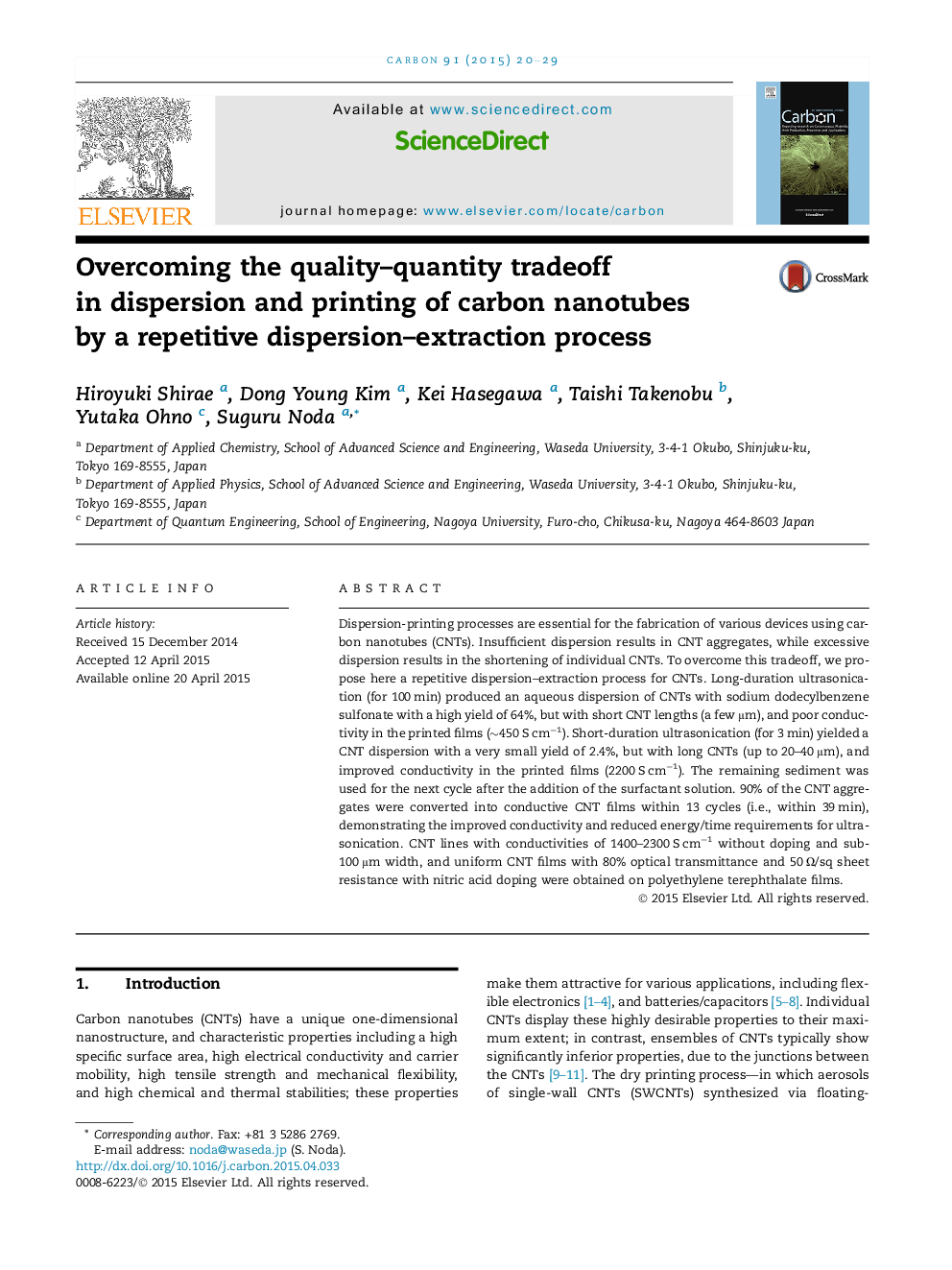| Article ID | Journal | Published Year | Pages | File Type |
|---|---|---|---|---|
| 7851604 | Carbon | 2015 | 10 Pages |
Abstract
Dispersion-printing processes are essential for the fabrication of various devices using carbon nanotubes (CNTs). Insufficient dispersion results in CNT aggregates, while excessive dispersion results in the shortening of individual CNTs. To overcome this tradeoff, we propose here a repetitive dispersion-extraction process for CNTs. Long-duration ultrasonication (for 100 min) produced an aqueous dispersion of CNTs with sodium dodecylbenzene sulfonate with a high yield of 64%, but with short CNT lengths (a few μm), and poor conductivity in the printed films (â¼450 S cmâ1). Short-duration ultrasonication (for 3 min) yielded a CNT dispersion with a very small yield of 2.4%, but with long CNTs (up to 20-40 μm), and improved conductivity in the printed films (2200 S cmâ1). The remaining sediment was used for the next cycle after the addition of the surfactant solution. 90% of the CNT aggregates were converted into conductive CNT films within 13 cycles (i.e., within 39 min), demonstrating the improved conductivity and reduced energy/time requirements for ultrasonication. CNT lines with conductivities of 1400-2300 S cmâ1 without doping and sub-100 μm width, and uniform CNT films with 80% optical transmittance and 50 Ω/sq sheet resistance with nitric acid doping were obtained on polyethylene terephthalate films.
Related Topics
Physical Sciences and Engineering
Energy
Energy (General)
Authors
Hiroyuki Shirae, Dong Young Kim, Kei Hasegawa, Taishi Takenobu, Yutaka Ohno, Suguru Noda,
